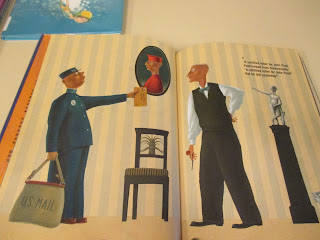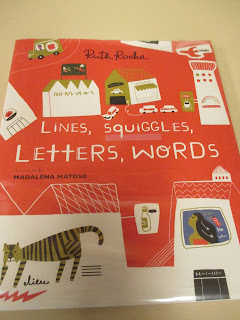I’ve been avoiding sitting down and writing this post for a few days now. I’m not good at endings, which is rather problematic for my aspiring authorship dreams, as well as a number of other facets of my life. But it’s the end of the semester, and it’s time to put a wrap on this little project of mine.
Right?
Well… Maybe?
As I reflect back on the journey I’ve been taking the last ten months, I can’t help notice that in many cases I think I’ve turned up more questions than answers. Early on, I jokingly referred to it as “tumbling down a rabbit hole” because I likened it to all the oddities that Alice encountered in her pursuit of the White Rabbit which led her through his rabbit hole and into Wonderland. I recognized that I was stepping off into uncharted territory and perhaps getting in over my head. While I wanted to discover Wonderland, if you will, I first needed to accomplish the task at hand.
Now that I’ve done that, I’m anxious to go back and narrow my focus a little bit more on any of these specific “rabbit holes” that grabbed my attention early on. I’m especially intrigued by the pairing of authors and illustrators from different countries like we saw with My Grandmother Lives In A Perfume Village. Since that post I encountered a few other titles from countries other than China, that have similar unexplained pairings, and I’m wondering now if it was done for similar reasons. If so is this a possible way to promote translated literature, at least in picture book form? What about pairing another country’s beloved author with an American illustrator? As I noted in that post, there are some potential cultural conflicts to consider, but it’s an interesting thought.
I’d also like to go back and spend a lot more time learning about regional language rights. It was something I encountered on a few titles in my infamous poop post. I still don’t understand why the same book would be published in the same language (English) with two completely different titles and just a few words changed otherwise. I can see why this might happen for a longer text, but a picture book? Some of those ideas I discussed that are used to “modify” texts from source to target language don’t really factor into a 600 word picture book. That being the case, why two translations? I’m sure there’s more to this specific rabbit hole, and I’d really like to learn more.
There were a number of other topics that I really was only able to break through the surface on that I’d like to go back and explore further. I’d never heard of wimmelbooks before, but their concept fascinates me. The artwork that I encountered in many of the books was worth a lot more research. I especially enjoyed those by Kilaka, and a number of the handmade books offered by Tara Books, such as the trio by Nathan Kumar Scott paired with three different Indian illustrators and the absolutely gorgeous Drawing from the City. Considering I found it rather last minute, I’d also like to go back and learn more about the codex art that originated in South America that was used in Migrant.
“What” is shared with young readers around the world, specifically in picture book format, which I discussed extensively during my controversy category could have been an entire independent study all of its own. I really struggled to narrow down specific topics to look at and books to cover. I’d like to investigate how different cultures “police” books or if they do at all. What does it take for a children’s book to land on a banned list in other countries?
The deepest rabbit hole of them all, which has numerous off-shoots along the way, is why are there so few texts being translated and published in the United States? And one step further, does it matter? Are we (a collective we, as in the nation) so elite that we can’t learn or benefit from literature around the world? I honestly don’t believe that’s the case, and along the way I’ve offered up a number of possibilities that all together, may at least shed some light on the matter. But what I’ve managed to do here is kind of like when you see an iceberg; it’s looming and massive, but what’s seen about the surface of the water is only 10% of its entire mass. This leads me to wonder then what else we might be missing. To explore this gigantic rabbit hole would take way more than one semester, especially considering that it is constantly evolving and I don’t think there really is just one answer.
I guess what I’m trying to say in my own bumbling way is, this is not the end. Maybe the end of my independent study that will earn me college credit (I’m really hoping for an A!) and further my undergraduate career, but not the end of my continuing to promote the importance of diversity in the world of children’s literature, including but not limited to, global diversity. What I’ve realized along the way is that I love to learn. I love to dig, I love to try to connect the dots and then offer up my own take on the picture they create. I love to share my thoughts and ideas and then be able to listen to others around me for their perspective. There is no one story, one way to view the world around us, no one person’s journey is exactly like another’s and I want to hear as many stories told in the voices they emanate from that I possibly can.
Somewhere along the way I began to realize that graduation in April was not “the end” for me either. This project has been a piece of the bigger puzzle I’ve been putting together that is my future. It has created new opportunities for me along the way. I was so excited to have my first article published. I’m looking forward to hopefully presenting at this year’s Undergraduate Symposium at Eastern Michigan University. I also just recently learned that I will be presenting at the Michigan Reading Association’s Annual Conference in March! Somehow, this piece has also contributed to me figuring out “what I want to be when I grow up.” (I know, at 34 I’m a little behind the curve on this one. Better late than never!) When I enrolled at Eastern two years ago I really wanted to write. While I still think that’s a part of my future, I think I may be able to make a bigger impact in the classroom. I’ve long since known that I don’t have the patience, creativity and stamina to teach younger students who are the readers of the literature I love, but I thrive in a college setting. I want to teach (and learn from!) those that do have the capacity to teach those younger minds. If I can help instill a passion (or more than a tepid interest) in children’s literature for them, they can pass it on to the young readers that so need it. I also hope that this would give me the ability to continue my research and writing in specific areas of children’s lit that fascinate and motivate me to keep learning and digging. I’ve recently applied for the Graduate School at Eastern, and if I get in I will be pursuing my Master’s in Children’s Literature. Eastern is one of the only school’s that offers this specialized degree. Most others allow you to earn a degree in literature with a concentration in children’s literature, but Eastern’s program is structured uniquely. I’ve also just submitted my application to be a Graduate Assistant, which would allow me to earn some classroom experience and learn from some of the amazing faculty at Eastern. So I suppose in many ways, this is just the beginning.
I’ve also decided that this isn’t “the end” for my blog. Every time I’ve sat down to write a post I have been reminded the joy that this type of writing brings me. It allows me to be me. And it gives me a platform to share what is meaningful in my life. If people read it, wonderful. If not, I enjoy the creative outlet. I don’t think that I’ll be blogging as regularly as I have been – 2,500 word posts twice a week are exhausting! – and I don’t plan on restricting it strictly to translated picture books, but I am going to keep the blog up and running. I intend to continue to share unique, diverse and meaningful books from the world of children’s literature. I’d love for anyone interested to read along. But, I’m sticking to Disclaimer #1!
Since I hatched this idea of mine almost a year ago, I have been blessed beyond measure by the support I have received along the way. For whatever reason, she took a chance on me and added overseeing my project to an already full class load and busy life, Professor Jessica Kander has my deepest gratitude. While I have mentioned numerous times along the way how patient, understanding and insightful (did I mention patient???) she has been, I know that I would have thrown the towel in or fallen down numerous rabbit holes along the way without her guidance. She has believed in me, pushed me outside my comfort zone and helped me figure out that “what’s next” piece with her encouragement. I’m also blessed to have quite the cheering section at home. From my computer engineer husband who has been the first to read and edit all of my posts (oh, the irony) because he’s the only person who knows what I mean to say better than I do sometimes, to the two literary critics that call me “Mom,” they have been there every step of the way. I’ve also had plenty of support from my extended family and friends who have listened to me babble about some of this endlessly and forgiven my absences as I’ve tried to juggle all my different responsibilities this semester. Thank you also to those who have reached out with ideas, suggestions or just words of support and kindness.
I don’t know anyone that lives a fairy tale existence, so it’s unrealistic to tie up what I began as “once upon a time” with “happily ever after.” Nor do I think that it’s been a dream, as Alice does after falling down a rabbit hole and landing in Wonderland. It’s been an adventure, for sure, but I’ve been wide-awake, learning and evolving along the way. Besides, this isn’t the end, it’s just onward and perhaps down a few of those rabbit holes along the way.











































